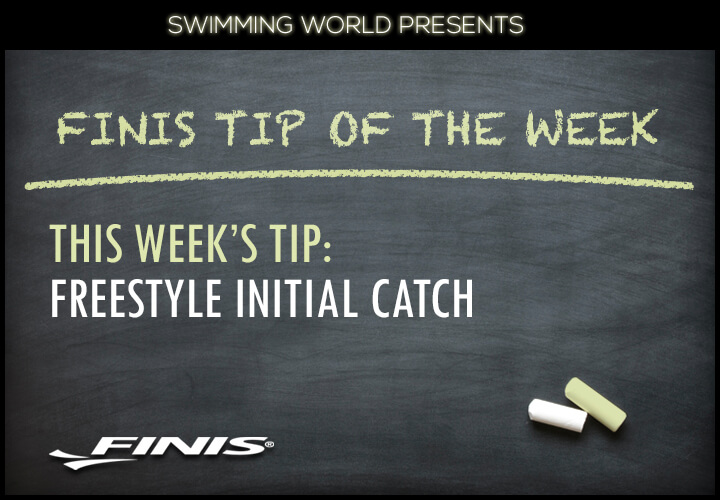FINIS Tip of the Week: Freestyle Initial Catch

Welcome to the “FINIS Tip of the Week.” Swimming World will be bringing you a topic that we’ll explore with drills and concepts for you to implement with your team on a regular basis. While certain weeks may be more appropriate for specific levels of swimming (club, high school, college, or masters), each tip is meant to be flexible for your needs and inclusive for all levels of swimming.
This month’s tip series is focused on the all-important freestyle catch. Arguably the most important part of any freestyle, developing and maintaining an efficient freestyle catch is crucial for swimmers at any ability level.
The last two articles in the series focused on the hand entry and extension to set up a high elbow freestyle catch, and this week will give you some tips in developing solid contact in the initial stages of the pull phase of the stroke.
Initial Contact…
Making sure you have a “hold” of the water from the very beginning of your pull is essential to having an effective catch. The faster you are able to make contact with the water that propels you forward, the more efficient your pull will be. General things to look for in the initial phase of the catch are making sure the fingertips are pointed down with the face of palm pressing behind you and to maintain that position through the pull phase of the stroke.
Sculling is a great way to making sure you are developing a good hold on the water early on in your catch. Front sculling can help increase your awareness of when you have a hold on the water. To make things interesting you can even experiment with front quadrant sculling where you mimic the initial pull phase of the stroke before progressing into full on underwater recovery drill.
High (And Deep!) Elbow…
It is common knowledge when it comes to the catch that you want a high elbow position with your elbow above your wrist and your wrist above your hand. But another important consideration is how deep that high elbow is positioned in the water.
You want to avoid having a “shallow” elbow position that can cause you to slip in the second half of your stroke. Make sure your elbow is deep enough that you establish a strong anchor in the water and that can give you enough room to finish your stroke without losing any pull in the water. Head up freestyle is a great drill to work on this, as it forces you directly into a strong catch position deep in the water.
All swimming and dryland training and instruction should be performed under the supervision of a qualified coach or instructor, and in circumstances that ensure the safety of participants.




Kursty Arthur Day